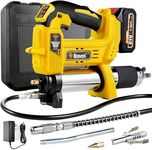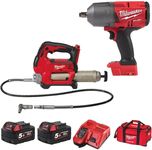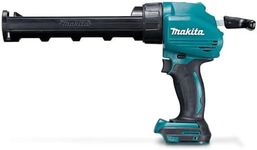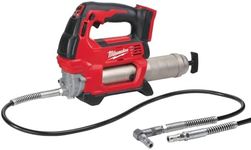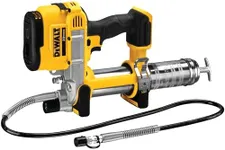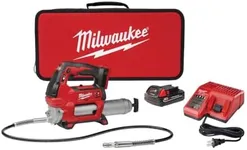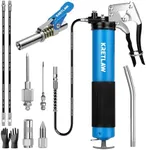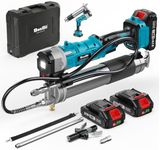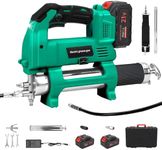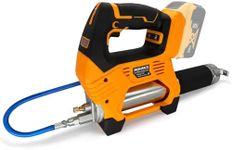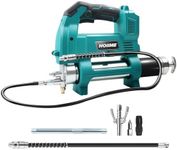Buying Guide for the Best Grease Guns
When choosing a grease gun, it's important to consider the type of tasks you'll be performing and the frequency of use. Grease guns are essential tools for lubrication, ensuring that machinery and equipment run smoothly and efficiently. The right grease gun can make maintenance tasks easier and more effective, so understanding the key specifications will help you select the best one for your needs.Type of Grease GunGrease guns come in several types: manual (lever and pistol grip), pneumatic (air-powered), and battery-operated. The type of grease gun is important because it affects how the grease is dispensed and the ease of use. Manual grease guns are suitable for occasional use and smaller jobs, as they require physical effort to operate. Pneumatic grease guns are ideal for frequent use and larger jobs, as they use compressed air to dispense grease, reducing manual effort. Battery-operated grease guns offer portability and ease of use, making them suitable for a wide range of applications. Consider how often and where you'll be using the grease gun to determine the best type for you.
Pressure RatingThe pressure rating of a grease gun indicates the maximum pressure it can generate to dispense grease. This is important because different machinery and equipment require different pressure levels for effective lubrication. Pressure ratings typically range from 3,000 to 10,000 PSI. For light-duty applications, a lower pressure rating may suffice, while heavy-duty machinery may require a higher pressure rating to ensure proper lubrication. Assess the equipment you will be servicing to choose a grease gun with an appropriate pressure rating.
Grease CapacityGrease capacity refers to the amount of grease a gun can hold, usually measured in ounces or grams. This is important because it determines how often you will need to refill the grease gun. Smaller capacity guns are lighter and more portable, making them suitable for quick jobs or when working in tight spaces. Larger capacity guns are better for extended use and larger jobs, as they require less frequent refilling. Consider the size and duration of your typical tasks to select a grease gun with the right capacity.
Hose LengthThe hose length of a grease gun affects its reach and flexibility when applying grease. A longer hose can be beneficial for reaching difficult or awkward areas, while a shorter hose may be easier to manage and store. Hose lengths can vary from a few inches to several feet. If you often work in tight or hard-to-reach spaces, a grease gun with a longer hose may be more suitable. For general use, a standard hose length should suffice.
Build Quality and MaterialThe build quality and material of a grease gun determine its durability and longevity. Grease guns are typically made from materials like steel, aluminum, or plastic. Steel and aluminum guns are more durable and suitable for heavy-duty use, while plastic guns are lighter and may be more suitable for light-duty tasks. Consider the environment and frequency of use when choosing a grease gun, as a more robust build will withstand frequent use and harsh conditions better.

